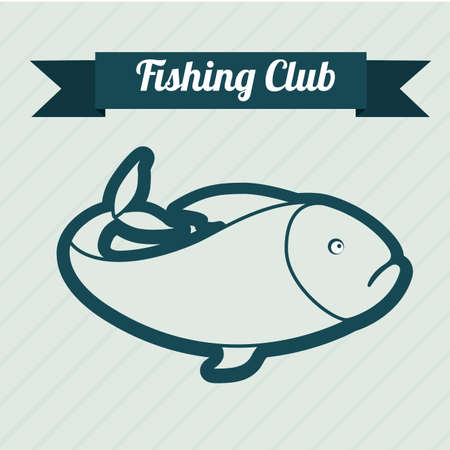Understanding Winter Conditions on British Rivers
If you’ve ever fancied braving the banks during the colder months, you’ll know that winter in the UK brings its own unique set of challenges for fly fishers. From December through early March, the weather can swing from crisp blue skies and hard frosts to relentless rain and biting winds. River levels often fluctuate thanks to frequent showers or melting snow, and water clarity can change overnight—from crystal clear to tea-stained—depending on how wild the weather gets. It’s not just us shivering in our waders; trout and grayling feel it too. Lower temperatures slow their metabolism, so they’re less likely to chase a fast-moving fly or rise to the surface unless there’s a decent hatch on. You’ll often find fish hunkered down in deeper pools or slower glides where they can conserve energy. Understanding these seasonal shifts is key: winter fishing here isn’t just about casting a line, but reading the river and tuning into how our finned friends adapt when Jack Frost comes calling.
Essential Winter Fly Fishing Gear and Clothing
If you’ve ever braved the banks of a British river on a chilly January morning, you’ll know that comfort and warmth are as vital as your fly selection. The damp UK winter has a knack for seeping into your bones, so proper gear makes all the difference between a memorable session and an early retreat to the car. Here’s some practical advice from countless frosty mornings spent stalking grayling and trout along the Test and the Dee.
Layering Up: Your First Line of Defence
Start with a good base layer – merino wool or quality synthetic thermals are ideal, wicking away sweat while keeping you snug. Add a mid-layer like a fleece or insulated pullover for extra warmth, topped off with a waterproof and windproof outer shell. Don’t forget breathable fabrics; even in the cold, you’ll work up a sweat walking the banks or fighting fish.
| Layer | Purpose | Recommended Materials |
|---|---|---|
| Base Layer | Wicks moisture, retains warmth | Merino wool, technical synthetics |
| Mid Layer | Insulates against cold | Fleece, insulated jacket |
| Outer Layer | Protects from wind & rain | Breathable waterproof (Gore-Tex, similar) |
Keeping Dry: Waders and Footwear
A reliable pair of chest waders is essential for British winter fly fishing. Go for breathable materials with reinforced seams—neoprene is popular for its warmth but can get sweaty during long walks. Match them with thick woolly socks and quality wading boots; felt soles provide grip on slippery stones, while studded options help on icy stretches.
Handy Kit List for Winter Sessions
- Thermal gloves: Fingerless designs keep dexterity for tying knots.
- Warm beanie or cap: A fleece-lined hat stops heat loss.
- Neck gaiter or buff: Keeps wind off your face and neck.
- Pocket hand warmers: Lifesavers on especially bitter days.
- Polarised sunglasses: Even in low light, these help spot subtle takes.
- Flask of hot tea: Not strictly “gear”, but nothing beats it when the frost bites!
Bespoke Advice for British Waters
The British winter can turn on you quickly—one minute it’s drizzle, the next it’s sleet. Always pack an extra dry layer in your rucksack just in case, and make sure zips and cuffs are tight to keep out draughts. With the right kit sorted, you’ll stay comfortable enough to focus on what matters: enticing those elusive trout and grayling from their winter lies.

3. Choosing the Right Flies and Tactics
If there’s one thing British winter fly fishing teaches you, it’s that the old summer standbys rarely cut it once the mercury drops. Cold water slows trout and grayling right down, making them a bit less keen to chase after your flies. So, matching the hatch becomes even more crucial, but with a subtle twist suited to the chilly conditions.
Tips for Matching the Hatch in Winter
In winter, insect life is pretty sparse compared to the heady days of summer, but there’s always something about if you look closely. Tiny midges (chironomids) and dark olives are your bread and butter, while on some rivers you might spot a few small stoneflies or even the odd large dark olive fluttering past on milder days. Pay close attention to what little activity there is—sometimes just a few dimples on the surface or bugs under rocks give away what’s on the menu.
Favourite Fly Patterns for Trout and Grayling
For trout, you can’t go wrong with a classic Pheasant Tail Nymph tied small—think size 16-20. Black or olive buzzer patterns are deadly too, especially if fished slowly under an indicator. For grayling, pink shrimps and red tags are proper favourites up and down the country. Don’t forget a simple Hare’s Ear Nymph either; it’s as at home on Yorkshire streams as it is in Welsh rivers. If fish are rising (which does happen after lunch when things warm up), a tiny F-Fly or Griffiths Gnat will often seal the deal.
Subtle Tactics for Sluggish Fish
Winter fish don’t want to burn energy chasing food, so slow everything right down. Use lighter tippets (say, 6X) for a more natural drift and present your fly gently—no splashy casts! Try short-line nymphing along seams and drop-offs where fish hunker down out of the current. If that doesn’t work, switch to Euro-nymphing tactics or fish two small bugs under an indicator to cover different depths. Sometimes just tweaking the weight or depth by six inches can turn a blank into a cracking session.
Remember, winter rewards anglers who pay attention to the little details—get your flies right and your tactics subtle, and those cold-water trout and grayling will soon be gracing your landing net.
4. Finding Fish: River Reading for Winter Success
When winter’s chill sets in across the British countryside, reading the river becomes a vital skill for any fly fisher chasing trout and grayling. Fish behaviour shifts dramatically with the colder temperatures and increased flows, so knowing where to cast your line is half the battle won. Let’s dive into how you can spot likely holding areas and understand how winter conditions change the river’s structure.
Understanding Winter River Structure
In winter, rivers often run higher and faster due to rainfall and snowmelt. This changes how fish interact with their environment. Trout and grayling both seek shelter from strong currents to conserve energy, making some familiar summer haunts less productive. Instead, focus on areas where fish can find both protection and food.
Key Holding Spots in Cold Conditions
| River Feature | Why It Matters in Winter | What to Look For |
|---|---|---|
| Slower Margins | Fish avoid fighting fast water, especially when it’s cold. | Edges near banks or behind reed beds with reduced flow. |
| Deep Pools | Deeper water offers stable temperatures and security. | Pools below riffles or bends; look for a slow swirling current. |
| Sheltered Runs | Broken water provides cover from predators and current. | Runs behind large rocks, fallen trees, or undercut banks. |
| Back Eddies | Eddies collect drifting food while minimising energy use. | Circular currents close to obstacles or river bends. |
Telltale Signs of Fish Presence
Keen observation is your best tool: watch for subtle rises, small dimples, or flashes as fish move below the surface. On overcast days, grayling especially may feed mid-water, so keep an eye out for gentle disturbances rather than splashy rises. In clear winter water, approach quietly and use polarised glasses—fish are wary and easily spooked in the low, bright light typical of British winters.
5. Staying Safe and Enjoying the Experience
Winter fly fishing in Britain is a real treat, but it does come with its own set of challenges. Before you even cast a line, make sure you’re kitted out for the cold. Layers are your best mate: start with thermal base layers, add an insulating mid-layer, and top it off with a decent waterproof jacket. Don’t forget a warm hat and fingerless gloves — numb hands do no favours when tying on tiny nymphs!
It’s also wise to let someone know where you’ll be fishing and when you plan to return, especially if you’re venturing into more remote stretches of river. A fully charged mobile (with local emergency numbers saved), a small first aid kit, and a flask of tea are all British winter essentials.
While we’re out enjoying these beautiful rivers and lakes, remember to respect the Countryside Code: close gates behind you, avoid disturbing wildlife, and take all your litter home. If you spot any signs of pollution or damage to the banks, give the local Environment Agency a bell — we all need to do our bit to keep our waters healthy.
The days are short in winter, so plan your session accordingly. Make the most of that low golden light just after dawn or before dusk — some of my best grayling have come as the sun dipped behind the hills. Don’t get caught out by nightfall; always leave yourself plenty of time to pack up safely before dark sets in.
Above all, savour it! Winter on the water has a magic all its own — crisp air, quiet banks, and wild trout and grayling at their finest. So wrap up warm, stay safe, and enjoy every moment of your British winter fly fishing adventure.
6. Top British Winter Fly Fishing Spots
If you’re keen to make the most of your winter fly fishing, Britain is blessed with some stellar rivers and beats that really shine when the mercury drops. Here’s a run-down of classic locations for winter trout and grayling, along with a few local nuggets to help you get the best from each spot.
River Test, Hampshire
The iconic chalkstream is a must-visit, particularly for its winter grayling. While some stretches are private, several beats offer excellent day tickets in the off-season. Try small nymphs like pink bugs or shrimp patterns and keep an eye out for rising fish on milder days.
River Dee, North Wales
Renowned as one of the UK’s prime grayling waters, the Dee is reliable throughout winter. The Corwen and District Angling Club waters are especially productive. Fish Euro-nymphing rigs deep and steady—grayling here can be surprisingly feisty even on cold days.
River Avon, Wiltshire
The Avon winds through classic English countryside and offers outstanding wild grayling sport in winter. Focus on slower glides and tails of pools with weighted nymphs. Don’t overlook tiny dries if there’s a midday hatch—the Avon’s fish can be surprisingly surface-oriented even in January.
River Annan, Scotland
This Scottish gem is famous for both trout and specimen grayling. Winter fishing is excellent around Lockerbie and Hoddom. Use Czech nymphing tactics in deeper runs, and bring a flask—it can get properly brisk up north!
Itchen Navigation, Hampshire
A favourite among local anglers for accessible winter grayling action, particularly near Winchester. The public access sections are perfect for a quick session; fish bug patterns tight to weed beds or try small streamers for bonus brownies.
Local Tips for Success
- Check river levels before you travel—winter spates can make fishing tricky or unsafe.
- Respect private water boundaries—many beats have clear signage but always double-check permissions.
- Wrap up warm! Layering and waterproofs are essential kit on any British winter adventure.
With these rivers on your radar and a bit of local know-how, there’s every chance of landing a cracking trout or grayling this season—even if you need to defrost your guides between casts!


